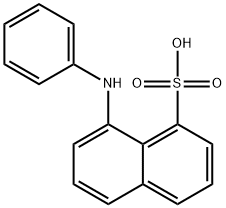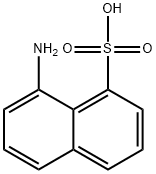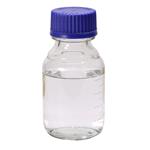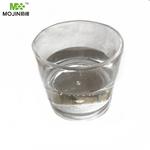Description
1,8-ANS is a fluorescent dye that binds with high affinity to hydrophobic surfaces of proteins. 1,8-ANS has an excitation maximum of 350 nm. It has an emission maximum of 520 nm when free in solution but undergoes a blue shift with an increase in fluorescence intensity when bound to protein; for example, when bound to intestinal fatty acid binding protein (FABP2) it has emission maxima of 468-477 nm. 1,8-ANS binds to low polarity regions of protein surfaces making it well suited for determining the affinity of hydrophobic ligands to their corresponding binding proteins, such as the binding of free fatty acids to FABPs. 1,8-ANS binds to FABP2 with a K
d value of approximately 9.7 μM at 24.5°C.
Chemical Properties
green needles
Uses
Intermediate of dyestuff
Uses
8-Anilino-1-naphthalenesulfonic Acid is used as a fluorescent probe to identify hydrophobic sites. Dyes and metabolites.
Definition
CHEBI:8-anilinonaphthalene-1-sulfonic acid is a naphthalenesulfonic acid that is naphthalene-1-sulfonic acid substituted by a phenylamino group at position 8. It has a role as a fluorescent probe. It is an aminonaphthalene and a naphthalenesulfonic acid.
Biotechnological Applications
8-Anilino-1-naphthalenesulfonic acid is a fluorescent dye with high affinity towards hydrophobic surfaces of proteins. It is useful for determining the affinity of hydrophobic ligands to their corresponding binding proteins. 8-Anilino-1-naphthalenesulfonic acid undergoes a blue shift and fluorescence increases when it binds to non-polar regions of a protein surface or membranes. Used as a probe to monitor protein-folding.






